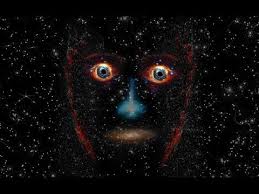Cosmic Vitality | Discovering the Living Tapestry of the Universe | Uniting Science, Philosophy, and the Mystical Dance of Existence
 The universe has long been viewed as a cold, mechanical expanse, but recent explorations into its structure and evolution suggest something far more wondrous—that the cosmos itself might be a living entity. Drawing inspiration from the Gaia hypothesis and ancient Vedic scriptures, the idea that every part of the universe is interconnected and imbued with life challenges our traditional perceptions. This blog post delves into these fascinating concepts, weaving together scientific insights, philosophical musings, and revelations from the thought-provoking video “The Universe is Alive.”
The universe has long been viewed as a cold, mechanical expanse, but recent explorations into its structure and evolution suggest something far more wondrous—that the cosmos itself might be a living entity. Drawing inspiration from the Gaia hypothesis and ancient Vedic scriptures, the idea that every part of the universe is interconnected and imbued with life challenges our traditional perceptions. This blog post delves into these fascinating concepts, weaving together scientific insights, philosophical musings, and revelations from the thought-provoking video “The Universe is Alive.”
In the accompanying video, the speaker asks profound questions about our origins and the true nature of existence. He proposes an analogy where the universe is likened to a cell—its solar systems, stars, and galaxies representing the intricate substructures of a living organism. Just as cells work in unison within a body, each cosmic component plays a role in sustaining the dynamic equilibrium of the whole. This metaphor not only bridges the gap between the micro and macro worlds but also prompts us to see ourselves as integral threads in the vast tapestry of life.
Scientific inquiry has increasingly supported the notion of a living universe. For example, research conducted by NASA’s Spitzer Space Telescope revealed a stellar system with intertwined chains resembling the double helix of DNA. Such observations resonate with the idea that the universe follows patterns of natural growth and evolution similar to those found in biological systems. Scholars argue that, just like a brain with interconnected neurons, the cosmos may operate with a kind of cosmic intelligence—a notion that both excites and challenges our understanding of life and consciousness.
Further reinforcing this perspective is the Gaia hypothesis, originally proposed by James Lovelock and Lynn Margulis, which posits that Earth functions as a self-regulating organism. Extending this theory to a universal scale, one might imagine that every planet, star, and galaxy contributes to a self-sustaining cosmic network. This network, much like a living body, maintains balance through continuous feedback loops and dynamic interactions. It invites us to reconsider our role within this cosmic ecosystem—not as isolated beings, but as part of a grand, interdependent system where every action can resonate on a universal scale.
Philosophically, the idea of a living universe has been echoed by mystics and spiritual gurus across cultures. Oriental spiritual teachings, in particular, speak of a “living cosmos” where every element is infused with purpose and vitality. These ancient perspectives encourage a holistic understanding of existence, suggesting that our universe is not merely a backdrop for life but a dynamic participant in the unfolding drama of creation and destruction. This synthesis of scientific inquiry and spiritual wisdom enriches the narrative, bridging the gap between empirical observation and the metaphysical quest for meaning.
As we explore these ideas further, it becomes evident that traditional dichotomies between the animate and the inanimate begin to blur. The notion that the universe is “alive” invites us to transcend simplistic categories and embrace a more nuanced vision of reality. John, as you delve deeper into these themes on SpeciesUniverse.com, consider how this integrated perspective might not only redefine our understanding of life but also inspire new approaches to science, technology, and our collective future. The interplay of evolution, quantum mechanics, and cosmic order paints a picture of a universe that is as vibrant and evolving as the life it supports.
In conclusion, the concept of a living universe opens up boundless avenues for exploration—scientifically, philosophically, and spiritually. It challenges us to question long-held assumptions and to view the cosmos through a lens of interconnectedness and vitality. As we continue to unlock the mysteries of existence, this perspective serves as a reminder that every part of the universe, from the smallest subatomic particle to the largest galaxy, is part of a continuously evolving, living whole.
Key Takeaways:
- Interconnected Life: The universe, much like a living organism, is a complex, interdependent system where each element contributes to the cosmic balance.
- Bridging Science and Spirituality: Scientific discoveries and ancient wisdom both hint at a cosmos imbued with life, urging us to rethink our place within it.
- Dynamic Evolution: The continuous evolution of the universe mirrors the growth and decay seen in biological systems, challenging us to view existence as an ever-changing tapestry.
“Humans strive to identify themselves as the crown of creation without considering the actual possibly of being just a tiny piece of nature. In that case can our infinite universe be a cell of one gigantic living organism?”
Join us on SpeciesUniverse.com to further explore these groundbreaking ideas, share your insights, and become part of a community that dares to reimagine the cosmos. Dive into related articles, engage with fellow seekers, and contribute your unique perspective as we journey together through the living tapestry of the universe.
Questions for you?
- Have you ever thought of the possibility expressed in this video?
- Does the idea that the universe is a living organism possibly just a single cell of some kind make sense to you?
- What about the idea that the Universe is just a single cell of a multiverse where each universe is a single cell of one large multiverse single organism?
- Does that make sense to you?
Please let me know what you think in the comments below…
Relevant Content:
Reference:
- Ridddle (YouTube Channel)

Leave a Reply